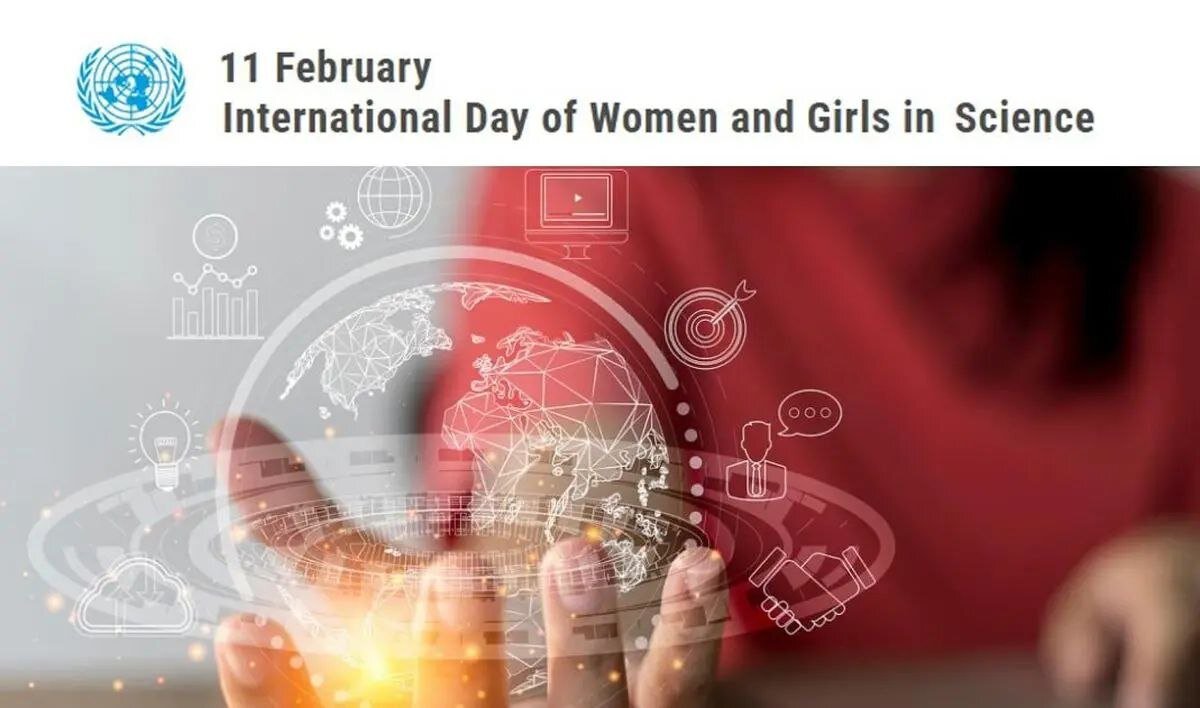Women's share in science, technology, engineering, and mathematics

TEHRAN –The International Day of Women and Girls in Science is celebrated every February 11 to promote full and equal access to and participation in science for women and girls.
A significant gender gap has persisted throughout the years at all levels of science, technology, engineering and mathematics (STEM) disciplines all over the world. 2025 marks the 10th anniversary of the International Day of Women and Girls in Science. This year the event is observed with the theme of ‘Unpacking STEM careers: Her Voice in Science’.
Gender equality in science is crucial for building a better future for all, yet women and girls continue to face systemic barriers and biases in pursuing scientific careers.
Closing the gender gap in science requires breaking stereotypes, promoting role models to inspire girls, supporting women’s advancement through targeted programs, and fostering inclusive environments through policies and actions that promote inclusion, diversity, and equity.
The status of Iranian women in various fields has improved after the Islamic Revolution and women, as half of the country’s population, have been leading in many fields.
After the victory of the 1979 Islamic Revolution, women were given equal rights to shape their futures. The Islamic Revolution provided them a chance to build their distinct identity and they have been tremendously successful in doing that.
There were extensive changes in the fields of science, education, economy, employment, and presence in management positions for women. Now a large part of activists in various fields of academia, business, and management are made up of capable Iranian women.
Education as a social value for women is seen as real freedom for them. Illiteracy among women and girls has been nearly eradicated as the literacy rate reached 99.3 percent and the ratio of female to male students has increased by 28 percent.
According to the latest data, nearly 60 percent of all university students are females today. The percentage of women in higher education has increased nearly 21 times since the Revolution.
The notable presence of women in the education sector has had a remarkable impact on the job market of the country as well, with women taking more jobs in both the public and private sectors.
The country has always underscored the economic, cultural, social, and political empowerment of women as a key element in policy-making, legislation, and national planning.
Currently, more than 70 women are acting as vice president, minister, spokesperson, and other key positions in the government, and four women hold top managerial positions in the cabinet, namely transport and urban development minister, Farzaneh Sadeq, government spokesperson Fatemeh Mohajerani, Department of Environment head, Shina Ansari, and vice president for women and family affairs, Zahra Behrouz-azar.
Also, female scholars constitute 665 out of 4,818 most-cited researchers in the country, more than 13 percent of the total.
In the past Iranian calendar year (March 2023 – March 2024), women accounted for 12.75 percent of most-cited researchers. With a 29.57 percent share, the Ministry of Health has the highest number of the most-cited female researchers.
According to the recent report of the Islamic World Science Citation (ISC), a total of 177 Iranian female researchers have been recognized in the areas of Agricultural Sciences, Clinical Medicine, Biology, Biochemistry, Chemistry, Pharmacology and Toxicology, Neuroscience and Psychology, Engineering, Material Science, Psychiatry/Psychology, Computer Science, Physics, Molecular Biology and Genetics, Social Sciences, Generalities, Physics, Plant and Animal Sciences, Immunology, and some have obtained the necessary points even in several fields.
Moreover, 375 female Iranian highly-cited researchers are among the top two percent of the world (one-year performance) in 13 subject areas of Clinical Medicine, Biomedicine, Chemistry, Engineering, Agriculture, Fisheries and Forestry, Strategic Technologies (Artificial Intelligence, Nanotechnology, etc.), Information Technology and Communication, Earth and Environmental Sciences, Physics and Astronomy, Public Health and Health Services, Biology, Statistics and Mathematics, Communication and Textual Research have obtained the necessary points.
In Iran, women account for more than 24 percent of inventions in the country, compared to the global average of 17 percent.
Having made great strides in manufacturing high-tech products and growing the knowledge-based economy, Iranian women are conveying to the world the message that they have the potential to shine in the
field of ‘technology’, the same as other fields. They have managed to shine brilliantly in different global events, featuring Iranian women’s abilities to the world.
The percentage of female CEOs and chairpersons of the board of directors of knowledge-based companies has increased noticeably over the past three years. The number of female managers has almost doubled, rising from 1,092 in the Iranian calendar year 1400 (2021-2022) to 2,250 by the end of the first nine months of the current Iranian year that started on March 20, 2024.
Only 12 percent of entrepreneurship and start-ups are founded by women. Out of 27,237 individuals who are members of the board of directors of knowledge-based companies, only 5,154, making up 19 percent of the members, are women.
In the latest international event, four Iranian women namely Azam Karami, Mahvash Abyari, Marzieh Ebrahimi, and Fatemeh Hosseini made history. They were among the winners of the BRICS Women’s Startups Contest 2024, which is one of the main programs of the BRICS Entrepreneurs Forum. The contest’s international panel of judges considered more than 1,000 applications from 30 countries.
